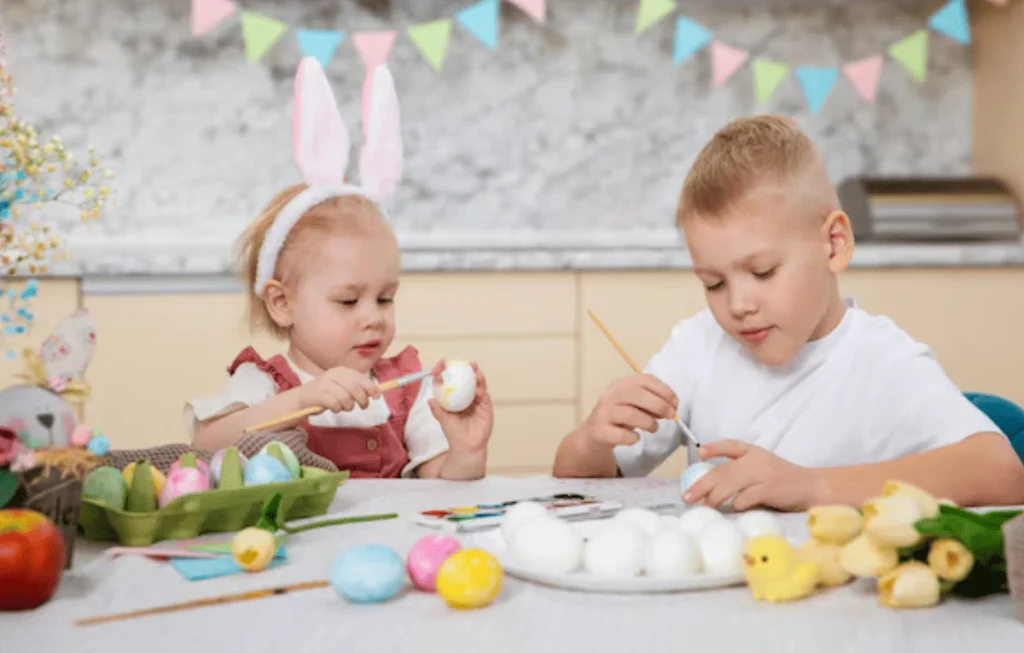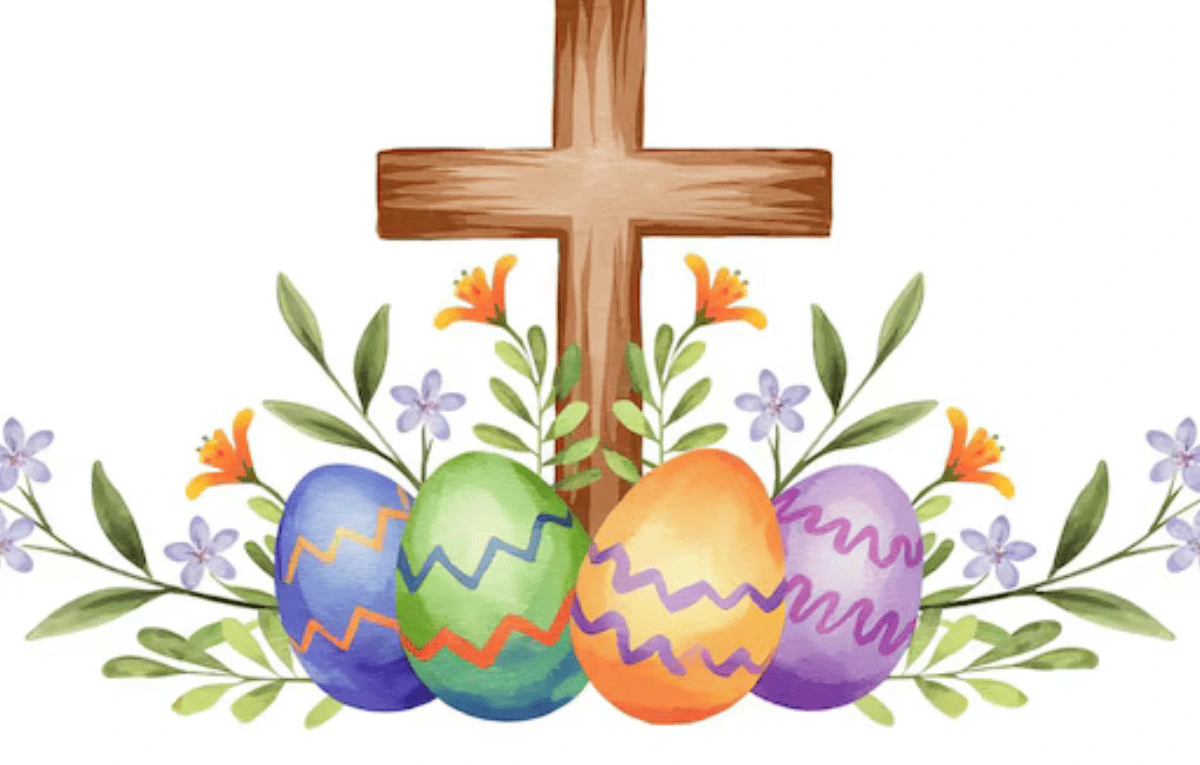Exciting Easter Homeschool Activities for Kids & Families

Creative and Educational Easter Activities for Homeschooling
Easter is a wonderful time for joy and celebration, making it a perfect chance to blend learning with fun! Whether you’re exploring the history of Easter or getting creative with holiday crafts, there are countless activities that will spark your child’s imagination and curiosity. It’s a great opportunity to break away from the usual routine and try something fresh and exciting. In this guide, we’ve gathered educational resources, creative activities, and engaging DIY projects that will ensure your Easter homeschool days are both enjoyable and informative. Let’s make this Easter season memorable with these entertaining learning activities!

Discover the History of Easter with an Engaging Unit Study
Do your kids ever ask, “What is Easter?” or wonder about the reasons behind this holiday? Why not delve into the history of Easter with an engaging, educational unit study? You can examine the religious and cultural dimensions of Easter while discussing its symbols, like the Easter bunny and eggs. If you’re interested in a faith-based perspective, there are plenty of resources available that emphasize the importance of Easter in Christian traditions, its origins, and how it is celebrated worldwide.
Easter Traditions: Incorporate Fun Facts into Your Homeschool Curriculum
Easter is filled with traditions—some religious and others secular—that have developed over the years. From Easter egg hunts to the idea of the Easter bunny, these customs are rich in history. You can weave these fun facts into your homeschool lessons by investigating how different cultures celebrate the holiday. Include this in your Easter homeschool curriculum to help children understand the significance of Easter traditions and how they differ around the world.
15 Delightful Easter-Themed Children’s Books
Reading is a fantastic way to bring the spirit of Easter into your home school. To keep the festive atmosphere alive, consider adding some Easter-themed books to your reading list. Whether you lean towards faith-based titles or secular stories, there are many charming books to enjoy together. The Tale of Peter Rabbit is a classic choice.
Discover the Mystery of Easter Island
If you’re looking to add a geographical twist to your homeschool lessons, Easter Island is a fascinating topic to dive into. How did the island get its name? What about those iconic giant stone heads? This educational resource will guide your child on a journey to uncover the history of Easter Island and the intriguing culture that surrounds it.
STEM Challenges: Easter-Themed Learning for Kids
Are you seeking a hands-on approach to learning this Easter? STEM challenges offer a fantastic way to ignite creativity and enhance problem-solving skills. From constructing egg-drop contraptions to designing a bunny obstacle course, these challenges provide a fun way to keep kids engaged while learning. They not only celebrate the season but also reinforce essential science, technology, engineering, and math concepts.
Naturally Dye Your Easter Eggs: A Mess-Free, Educational Activity
Traditional egg-dyeing can be quite messy, but this year, consider trying a more eco-friendly and educational method. Using fruits, vegetables, and spices to dye eggs naturally adds an extra layer of learning. Teach your children about the science behind natural dyes and how different ingredients produce various colors. This is a wonderful way to incorporate a chemistry lesson into your Easter festivities!
Nonreligious Easter Activities for a Fun Week of Learning
For homeschoolers who prefer a nonreligious approach to Easter, there are still plenty of opportunities for learning and enjoyment. From crafting festive decorations to exploring the life cycle of a rabbit, there are numerous activities to keep your kids engaged. Check out these lesson plans that can be implemented in the week leading up to Easter for a week filled with learning, creativity, and seasonal fun.
DIY Easter Basket Craft: A Creative and Budget-Friendly Project
Are you looking for a way to save money while adding a fun craft to your Easter plans? This DIY Easter basket tutorial will guide you in making a cute, functional basket using cardboard. It’s a great way to get creative without breaking the bank
FREE Rabbit Homeschool Unit Study: Perfect for Easter Learning
Easter is a wonderful time to dive into the fascinating world of rabbits! With a free rabbit homeschool unit study, you can teach your children all about these charming animals. Discover their life cycle, natural habitats, and their important role in the ecosystem. You can also look into how rabbits are featured in various Easter traditions across the globe. This approach combines fun with education, linking Easter to biology and environmental studies.
Interactive Easter Learning Games
Learning can extend beyond traditional books and worksheets. Easter offers a fantastic opportunity to include interactive games that reinforce educational concepts. Whether it’s playing Easter bingo with math challenges or organizing an Easter-themed scavenger hunt to boost vocabulary, these activities will keep kids engaged and enhance their learning experience.
Easter Cooking and Baking: A Sweet Lesson in Math
One of the highlights of Easter is the tasty treats! Why not blend your passion for baking with some educational fun? Making Easter cookies or an Easter-themed cake is a great way to teach kids about measurements, fractions, and following recipes. You can also incorporate a history lesson by exploring traditional Easter dishes from various cultures around the world.
The Value of Gift-Giving in Homeschooling
If you’re homeschooling your kids and want to include the idea of gifting in their learning, you can emphasize the importance of both giving and receiving gifts, as well as how to choose and present them thoughtfully. Here are some suggestions to help integrate gift-giving into your homeschooling activities:
- Introduce the Concept of Gift-Giving
Storytelling: Begin by sharing stories (whether from books or personal experiences) that showcase the importance of gifts, such as the joy of giving or the value of thoughtful gestures. Books like The Gift of the Magi or The Giving Tree can effectively illustrate kindness and selflessness.
Discussion: Engage in conversations about the history of gift-giving across different cultures, whether during holidays like Christmas or birthdays, or as a way to express appreciation or love. - Teach Kids How to Make Homemade Gifts
DIY Crafts: Encourage your children to create personalized gifts for family members, friends, or even each other. Whether it’s homemade cards, artwork, or small crafts like friendship bracelets or keychains, this teaches them the value of effort and thoughtfulness.
Gift Wrapping: Show them how to wrap gifts creatively using recycled materials, fabric, or homemade gift bags. This is a great way to work on fine motor skills, creativity, and sustainability. - Learn About Charity and Giving Back
Donate Gifts: Discuss with your kids the importance of helping those who are less fortunate. You can involve them in donating clothes, toys, or books to a local charity, helping them grasp the value of generosity.
Create Care Packages: Have your children assemble care packages for the elderly or families in need. They can choose items to include and decorate the package with their artwork or a personal note. - Gift-Related Math Activities
Budgeting for Gifts: Teach them basic math skills by having them plan and budget for a gift. They can figure out how much they can spend, how to stick to their budget, and the overall value of thoughtful giving. - Gift-Exchange Games
Secret Santa: If you’re involved in a homeschool co-op or have friends who homeschool, consider organizing a small Secret Santa gift exchange. This allows your kids to experience the joy of giving anonymously and the delight of receiving a thoughtful gift.
Gift Bingo: Design a fun game centered around gifts, where each child matches a gift to its giver. This playful activity introduces the idea of understanding preferences and making considerate choices. - Incorporate the Spirit of Giving in Daily Activities
Appreciation Days: Set aside special days when your kids can surprise you with small acts of kindness, such as drawing a picture, writing a note, or completing a chore without being asked. This teaches the value of thoughtful gestures and spontaneous kindness.
Role-Playing: Create scenarios where kids can practice giving and receiving gifts, whether in a family setting or through pretend play. They’ll learn the social cues and etiquette involved in receiving gifts with gratitude and giving gifts with care. - Gift Giving and Gratitude Journal
Create a Gratitude Journal: Encourage your kids to start a gratitude journal where they can list the gifts they’ve received and express what they are thankful for. This helps them focus on appreciating the little things, whether it’s a homemade gift or a kind gesture.
Reflect on the Joy of Giving: After giving a gift, prompt your kids to think about how it made them feel. Did it bring joy to the recipient? This reflection helps children connect with the deeper meaning behind gift-giving. - Teach the Importance of Thoughtful Gifts
Meaningful Gift Selection: Help your children understand that the best gifts often reflect the recipient’s interests or needs. Discuss what makes a gift meaningful and why a thoughtful gesture can be more valuable than an expensive one.
Letter Writing: Teach your children how to write heartfelt notes or thank-you letters. This adds a meaningful touch to the gift-giving process and reinforces their communication skills. - Create a Family Gift-Giving Tradition
- Celebrate Special Occasions: Start a family tradition of exchanging gifts for special occasions, such as birthdays, holidays, or significant milestones in your homeschooling journey. This practice will help your children appreciate the joy of celebrating others.
- Time over Things: Highlight that the most meaningful gifts often aren’t physical items but rather the time and attention you share with one another. Consider planning family outings or activities as gifts, like visiting the zoo or enjoying a picnic together.
By weaving these activities into your homeschooling routine, you can teach your children the value of giving while also nurturing their creativity, empathy, and understanding of social values.
Conclusion
Make This Easter Unforgettable with Fun and LearningThis Easter, seize the chance to combine enjoyment with education! From exploring Easter history and tackling STEM challenges to engaging in crafts, reading, and DIY projects, there’s something for every learner. With these exciting ideas, you’ll not only create a memorable Easter celebration but also spark curiosity, creativity, and enthusiasm in your homeschooling journey. Remember, Easter is more than just candy and eggs—it’s about learning and growing together as a family.So, dive into these activities and enjoy an Easter that’s both educational and fun!

